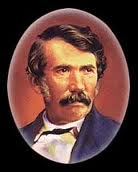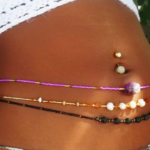A Brief History Of Body Piercing …back to Dr Livingstone in Malawi
Published on October 4, 2011 at 10:56 AM by FACE OF MALAWI
Body piercing is an age-old art form that has been utilized in generations in cultures all around the world. Numerous individuals nowadays who seek to pierce diverse parts of their body may pick to do so to honor their heritage or make a unique statement of their own. If you are interested in piercing a part of your body, consider researching the origin and history of distinct varieties of body piercing.
The very first sign of body piercing is the form of nose rings that had been recorded approximately 4,000 years ago in the Middle East. In truth, there is even mention of nose piercing in the Bible. Nomadic tribes in Africa and the Middle East still practice nose piercing, and frequently the size and top quality of the ring denote the wealth and social status of the wearer. Nose piercing is also frequent in India, where the left nostril is pierced to prevent medical problems and ease childbirth.
Tongue rings date back to the ancient Aztec and Mayan cultures of Central America and Mexico. These cultures heavily believed in the power of shaman, who pierced the tongues of individuals in order to communicate with their deities. The pain from the piercing forced the individual into an altered mental state, whereas the blood from the hole was shed in their honor. In addition to these native cultures, specific tribes in the Pacific Northwest also practiced tongue piercing for comparable factors.
Ear piercing is by far the most popular type of body piercing and is believed to have been practiced longer than any other form of body piercing. In reality, when scientists found what they believe to be the world’s oldest fully mummified body, tests showed holes punctured via the mummy’s ears. Ear piercing ranged from a status symbol to a magical ward to a coming of age ritual.
The lip labret piercing is employed in several African cultures, with graduated discs inserted in the hole to slowly stretch the skin. The size of the disc is directly associated with power, virility, and status. Similarly, tribes in Mali, Ethiopia, South America, and the Pacific Northwest pierce the lip labret. Well-known explorer Dr David Livingstone came upon the Makololo tribe in the African country of Malawi and inquired to why the men in the tribe wore lip labret. The answer was a easy one: beauty.
Another piecing common with ancient cultures and civilizations is the septum piercing. Commonly associated with the “bull ring,” a septum piercing penetrates the space directly between the nostrils. Most ancient tribes pierced their septum in order to promote a fierce or war-like face on their warriors. Individuals in India, Tibet, and Nepal wear a septum piercing, as do many North American Indian tribes, such as the Nez Perce. Australian aboriginals also wear a piercing via the septum and have so for thousands of years.
Body piercing has been around for thousands of years, ranging back to primitive individuals to current individuals and tribes all over the world. Although some body piercing may well be controversial, they are surely not original or new. Quite a few people select to showcase their cultural or native heritage by picking a body piercing that reflects their heritage. Furthermore, numerous individuals seek a body piercing in a traditional manner or choose to be pierced whilst visiting an exotic destination. If this is the case, make certain the piercing parlor is reputable and practices outstanding hygiene. Others choose to pierce distinct parts of their bodies to elicit a shock to those around them. Still, others select a piercing for personal factors, regardless of whether it is a remembrance of a beloved friend or family member or in honor of a personal milestone.



